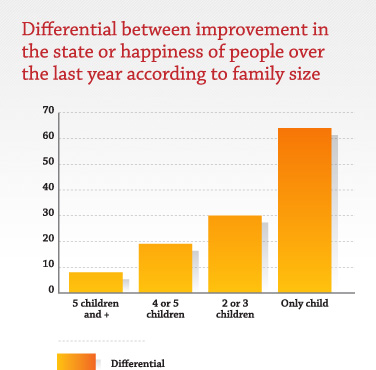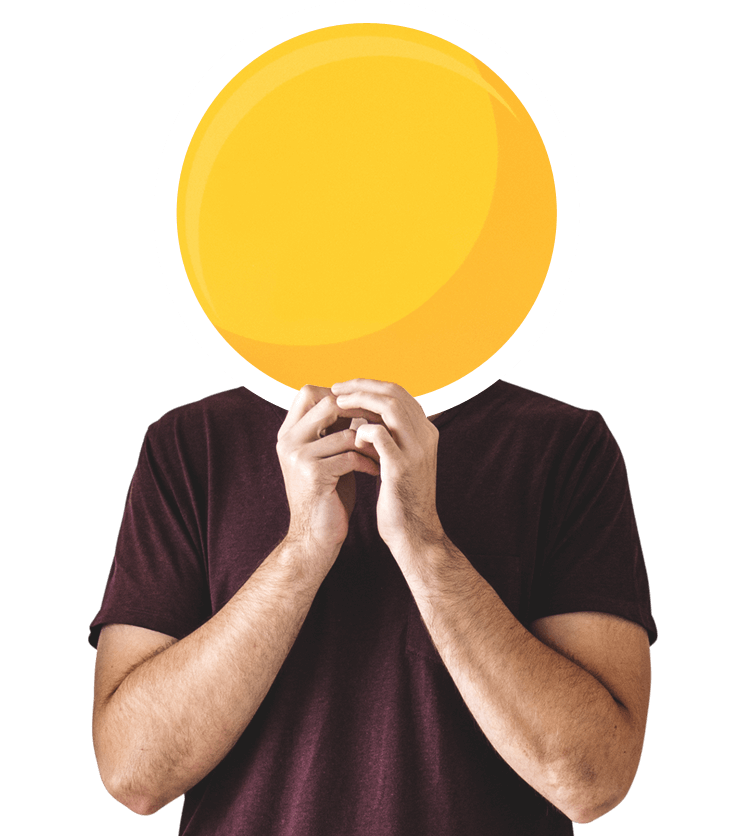Large family, small differential!
You often hear that society doesn't promote large families and doesn't encourage couples to have a lot of children. It seems so obvious from a careful look at the data.
The RHI is inversely proportional to family size (73.00 for respondents from families with more than 5 children compared to 79.00 for only children). This also applies to the differential between improvement and deterioration in the state or happiness of people over the last year (from +8 to +64).
Only children reap obvious benefits, while life proves much more difficult for people from families with more than five children. Moreover, this category of people recorded the second lowest differential of all subgroups analyzed, after people living alone. So, if you want to be happy, have kids but not too many!

The Concept of Differential
The concept of differential between improvement and deterioration in the state or happiness of an individual last year is a useful, complementary indication for analyzing the various segments and subgroups in a population, making comparisons between them, and determining which categories in recent months have been the best and worst.
The differential is calculated simply by subtracting the percentage of respondents in a particular group claiming that their state or happiness improved by the percentage of those who indicated that it had not.












